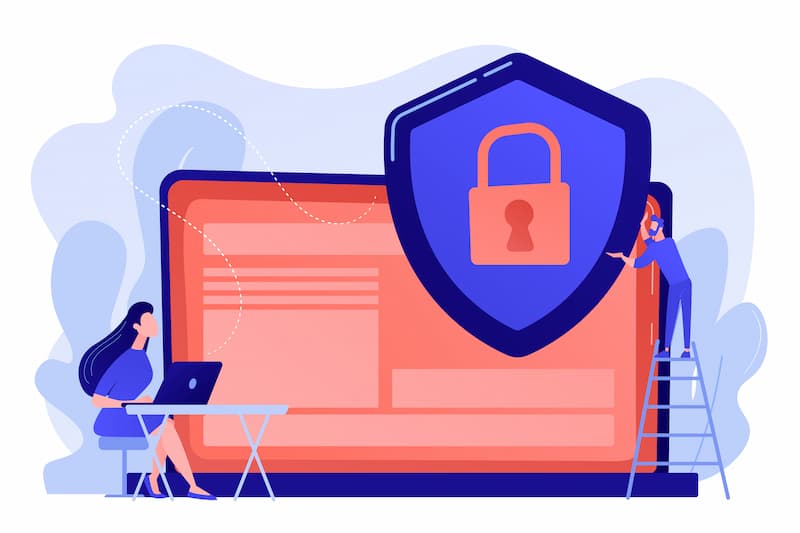A safe workplace is more than a good PR talking point – it’s a fundamental worker’s right. So, although your employees might roll their eyes at safety training, compliance courses are vital for keeping them working safely on the job.
But safety training doesn’t have to be boring or hard to manage. A learning management system (LMS) allows you to easily create engaging safety and compliance courses and to manage their delivery, testing, and record-keeping – automatically!
When it comes to safety, LMS features are critical. Features of a good LMS include things like personalized learning paths, automated certification management, and the ability to deliver training courses in various formats.
Whether you’re in construction or manufacturing, healthcare or education, an LMS can revolutionize your safety training. Not only can it help keep your employees engaged in their training, it can streamline compliance administration by automating your certification and training programs.
This blog explores the 5 LMS features that make learning management systems the best choice for delivering compelling and well-organized safety training. Plus, we offer tips on how to implement LMS safety training in your organization with brilliant results.
LMS reporting and tracking tools make it easy to organize compliance
Using a learning management system, safety training is easy to track. An LMS has comprehensive tracking capabilities that extend to every part of your training programs.
Statistics indicate that 90% of employees feel they didn’t learn anything from their safety training. Ouch. That’s why tracking your learners’ progress and retention is vital to ensuring your safety training course isn’t a giant waste of time.
For starters, you can embed tracking elements right into your training course materials. Quizzes and tests help track learner progress and course completion, and show how well they’re learning and retaining compliance information.
These insights tell you and other safety training program stakeholders:
- Who has started which courses
- Who has completed their courses
- How long it took learners to complete their course
- How well they understood the training content
You can automatically nudge employees to complete or retake their compliance courses if their data shows that they haven’t met standards for course completion or data retention.
When you must report to stakeholders on how your compliance training program is progressing, exceptional LMS reporting lets you customize your reports and audits. That way, your reports can display precisely the data you need in a format that makes sense for your audience.
But beware: not every LMS offers customizable reporting. LMS reporting that doesn’t allow you to change the report or data formatting may be frustrating to use and may not generate reports that matter to your stakeholders.
When submitting compliance audits, you’ll want genuinely customizable LMS reporting that lets you follow submission instructions to the letter.
Course customization and authoring tools let you create engaging safety training courses
If your learning management system offers course customization, your online training can be engaging for learners and easy to produce for you!
Online safety training is most effective when it’s excellent. And “excellence” is a hard mark to hit. But if you customize your course to include industry-specific content, policies, and procedures, it’s more likely to engage employees.
Multimedia elements – like interactive videos, webinar lectures, and forum discussions – make the virtual learning environment feel more like a real classroom. Make sure the LMS you choose lets you create courses from a variety of materials. If it doesn’t seamlessly integrate text, videos, images, and SCORM materials, it’s not customizable enough to hold your employees’ attention.
If you aim to create a top-notch safety course, your employees will respond with better attention spans and higher percentages of data retention.
Use the data you’ve gathered from each course to see how you can improve your online training. Poll the learning group to understand which course elements worked for them, and which parts could use improvement. Don’t be afraid to dive into the training stats to uncover how you can continue to improve your online training.
Automated notifications and reminders help you deliver training to the entire organization
A learning management system lets you deliver training to the entire company automatically. An LMS features automated messages like:
- Notifications that remind your learners they need to complete a course
- Calendar updates to inform them about upcoming events
- Reminders about upcoming or missed deadlines
These types of messages ensure your staff get timely updates about safety training. That way, they have the training they need when they need it, and your organization meets compliance regulations.
When it’s time to renew a certification, the LMS informs your employees automatically and guides them to the renewal training. Employees can retake certification tests without resitting the online training, depending on how you’ve set it up.
Online training streamlines compliance tracking and certification management
In a thriving company, you may have various departments that require different training at different times.
Healthcare organizations might need to train specialized nurses, front office staff, and billing staff. Construction companies might need training for bricklayers, roofers, and engineers on safety topics that affect their job roles. And regardless of their industry, everyone should undergo ethics and diversity training.
The best LMS platforms allow you to track compliance in every department, both for each person and the department as a group. Pulling training records for personal and group training sessions should be easy.
And it should be easy to see if a person or group hasn’t completed their training. Training records should be regularly reviewed to ensure you’re on track with compliance standards, and an LMS makes it easy to compare compliance deadlines with your employees’ training progress.
When compliance audits are due, you can find the data you need without a hassle, and you’ll know that each employee across all departments has received the proper training for their role.
Manage deadlines like a pro by integrating with regulatory content
A top-tier LMS offers next-level safety training management. With a learning management system, you can integrate with regulatory databases and content libraries.
That way, you have instant access to compliance materials. The regulatory body updates them on a rolling basis, so you don’t have to lift a finger to give your employees access to the latest and greatest.
For example, if you’re a healthcare company, your LMS can integrate with HIPAA and OSHA guidelines so that your training content is always compliant.
Compliance standards shift, and you don’t always get the memo. LMS integration with regulatory bodies gives you peace of mind knowing that you haven’t missed a compulsory change in your compliance training. Plus, it gives your employees access to up-to-date info that helps them do their jobs more safely.
Safety training can hit regulatory targets and offer an engaging curriculum, making it simple for administrators to organize their learners and keep up with shifting rules. And a learning management system makes it possible.
If you’re ready to explore the learning management system that makes safety training easier for both instructors and employees, take a tour of LearnRight.







